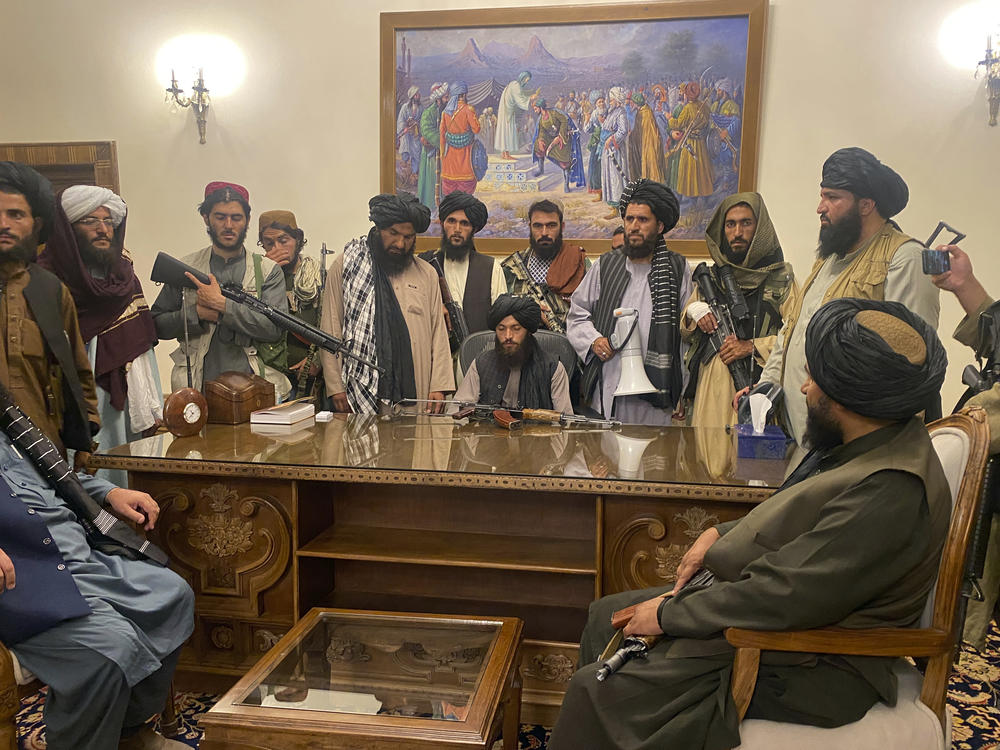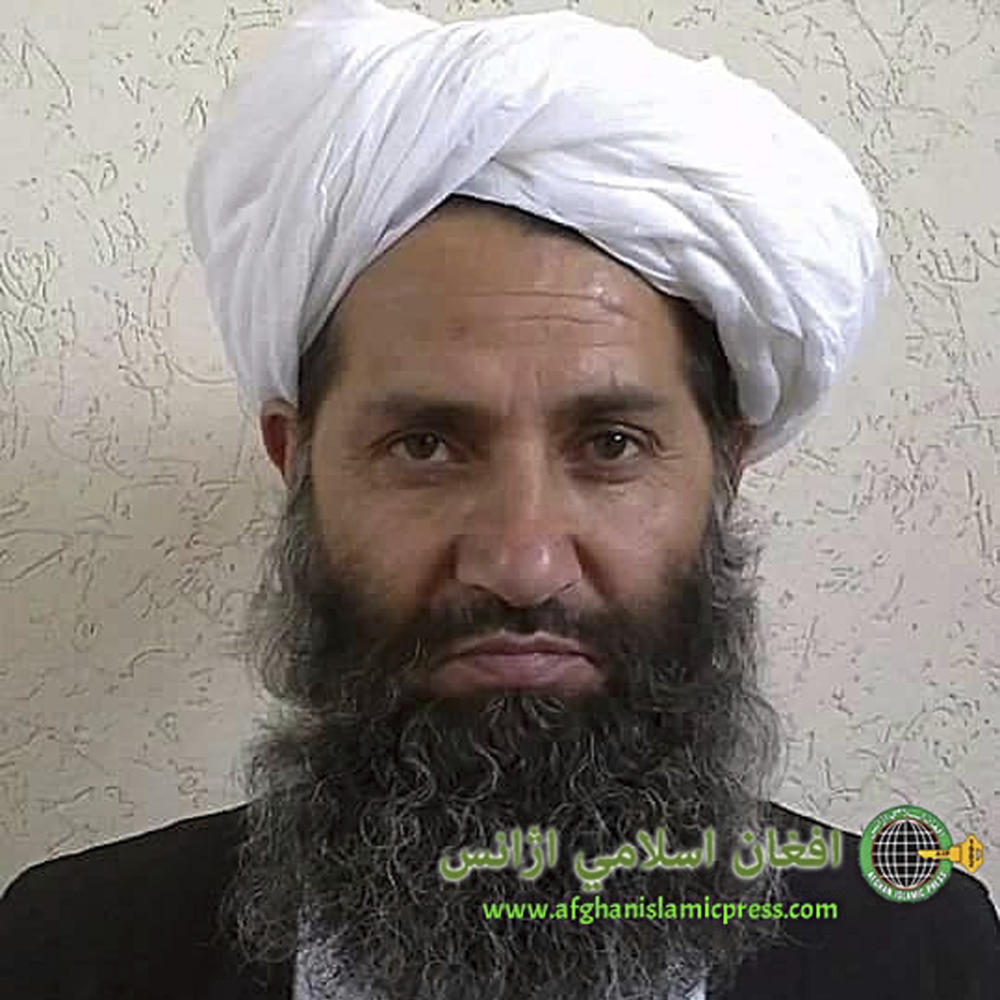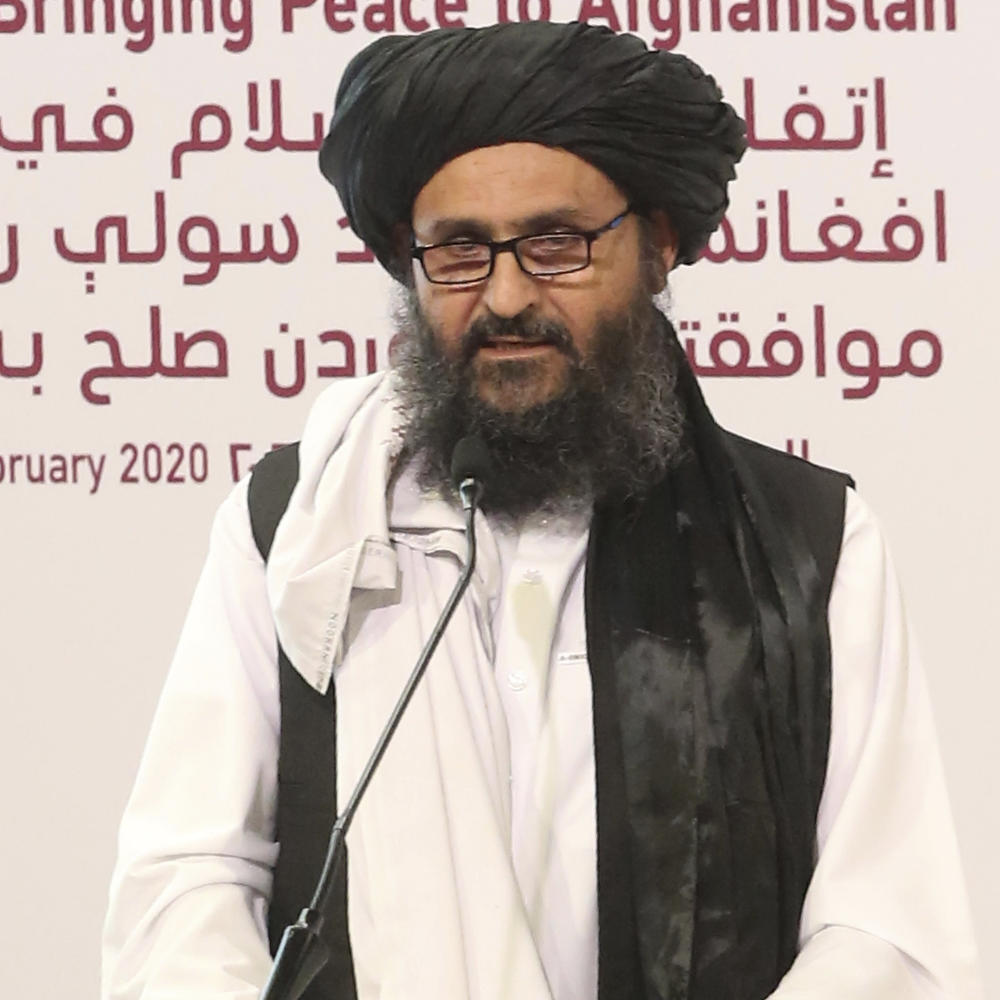Section Branding
Header Content
Here's What Taliban Leadership Looks Like In 2021
Primary Content
Updated August 16, 2021 at 7:30 PM ET
Kabul fell on Sunday, reestablishing Taliban rule over Afghanistan for the first time in 20 years. Leaders of the militant group who've spent years fighting are suddenly in control of the whole country, with their internal divisions and actions affecting the lives of millions of Afghans.
The Taliban have been split in recent years between the group commanding the battlefield and the political leadership who were engaged in peace talks in Doha, Qatar.
"The Taliban have got some divisions and then they have some fractures, but they do operate as a common movement," says Carter Malkasian, a historian and author of The American War in Afghanistan: A History.
The Taliban previously ruled Afghanistan between 1996 and 2001. Malkasian says the main figures of the Taliban have remained at the top for some time — and that even though they care more about gaining international legitimacy this time around, that they don't care enough to actively prevent violence and cut terrorist ties.
"It's pretty likely they will announce the restoration of their Islamic emirate within the week, if not sooner," he says.
Malkasian, who was also an adviser on strategy to the chairman of the Joint Chiefs of Staff, spoke to All Things Considered's Mary Louise Kelly about the future of Taliban leadership, what we know about their goals for Afghan rule and how they've managed to stay well-funded over the years.
This interview has been edited for length and clarity.
Interview Highlights
On the Taliban's main ruler, Haibatullah Akhundzada
Mullah Haibatullah, his background is as an Islamic scholar and Islamic judge. He was the head of the Taliban High Court for years — until he became deputy leader after Mullah Omar died, and then after Mullah Mohammed Mansour was killed by the U.S., he became the leader.
Although, Haibatullah is a very mysterious character. He only comes out with announcements a few times a year. We have only a few other glimpses and ideas of what he's saying, so he's not a public face. It is even possible that he's not alive, and I kind of say that remembering that Mullah Omar had been dead for two years before we knew it.
On the Taliban's political leader, Abdul Ghani Baradar
He oversees the political effort and the negotiating team that the Taliban has been running for years now [in Doha] falls under him. Baradar is someone who is involved in the original founding of the movement back in the 1990s. When that movement fell, he took refuge, eventually, in Pakistan. He became the deputy leader and he was in effect like the CEO of the movement for many years because Mullah Omar was in hiding and kind of giving him strategic guidance. But Baradar was the guy actually running things.
However, I think that the Taliban would be more inclined, given their history, to have Haibatullah become the leader if Haibatullah is indeed alive. So we don't know exactly what structure the Taliban want to take when they re-announce the emirate. But the best bet, I think, is their existing structure, in which Mullah Haibatullah is at the top.
On the Taliban's vision for governing Afghanistan
One of the things that they're very sensitive about is their failure to provide goods and services and manage and administer the country well during the 1990s. So the Taliban want to do that better; they want development projects to occur. And because of that, they also want to maintain a relationship with the international community because they realize that they need the funding of the international community to be able to continue to provide those goods and services.
They also are aware of how their treatment of women and their support of terrorism and their harsh punishments gave them a very bad name. So they have said in a variety of ways that they won't behave in this manner, that everyone will be treated properly and according to Islamic law. But it's unclear how much that is really going to occur.
On who's funding the Taliban
The Taliban's primary source of funding by the available evidence that's out there is coming from within Afghanistan. And so partly from taxing commerce, taxing people, going through various cities and through border posts; partly through the taxing of [American] contracts that used to be in existence — but primarily through poppy, through taxing the growth of poppy. And that's a real benefit to them, because a lot of poor farmers, they can make money off poppy. They're happy to grow it, and it makes the poor farmers feel more allegiance to the Taliban.
They also do get some degree of monetary support from Pakistan and a lesser extent Iran and Russia — or at least they did — but that's a minority. And they've also gotten support from international donors from the Middle East. But that also has been a minority of support.
Copyright 2021 NPR. To see more, visit https://www.npr.org.



